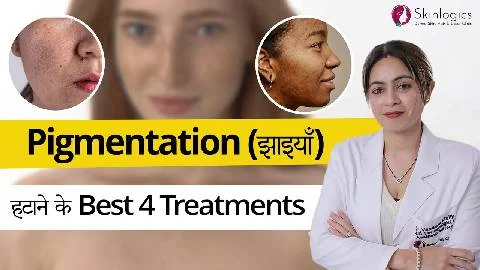What are the causes of hyperpigmentation?
In very simple terms, hyperpigmentation is the darkening of the skin in certain areas and the reason behind this is excess production of melanin. The more melanin is present, the darker shade individuals have. The body releases melanin when the skin gets exposed to UV rays of the sun. But there is not just this one cause of hyperpigmentation. Some more causes of hyperpigmentation are as below:
- Sun damage: By using a sunscreen, the skin can be protected against the harmful UV rays of the sun. Sunlight triggers the melanin production and melanin on the other hand, protects the skin by acting as a sunscreen and protecting from the UV rays. This is why people get tanned in the sun.
- Pregnancy: Hormones can affect the body in multiple ways. The dark patches of pigmentation which are caused by hormonal changes is known as Melasma. This occurs most commonly in pregnant women due to hormonal changes. Pigmentation can also be a side effect of some certain hormonal treatments.
- Friction: The amount of melanin released has an impact on the overall color of the skin. However, hyperpigmentation or discolouration is more common in some areas of the body, such as the underarms and inner thighs. Chafing, dry skin, tight clothing, and sweat can all produce friction and cause darkening of the specific area.
- Post-inflammatory hyperpigmentation: Some other reasons for pigmentation include scratches, cuts, acne, scrapes etc. After these acne or cuts get healed, they leave a dark spot behind. The skin is left darkened.
- Medical Conditions: Pigmentation on the neck, below the arms, or near the genitals is common in individuals having PCOS. Acanthosis nigricans is a type of hyperpigmentation that causes the skin to turn velvety brown to black in color. Insulin resistance can cause dark spots and patches, which can be a sign of diabetes.
- Medication: Usage of drugs such as antibiotics, antiarrhythmics, and antimalarial medicines.

